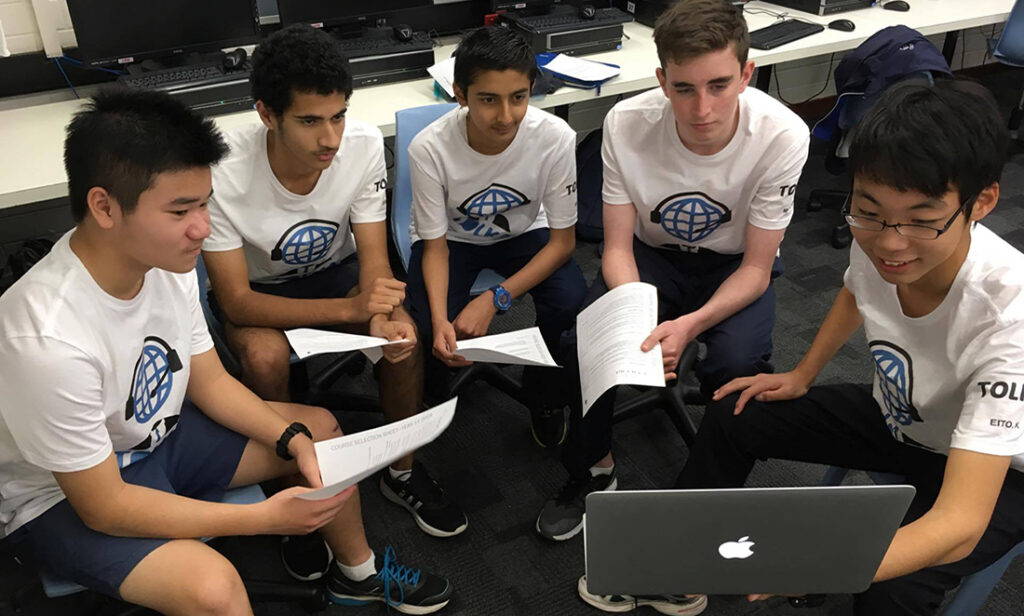Ahmed, TaeYoung, Eito, Quincy, Raj and Matthew make up team Tolka, and on 1 November this year, they took out the WA Young Innovator of the Year Award.

Tolka is best described as an app for crowdsourcing interpreters.
It allows anyone to hire interpreters instantly, for as long as they want, at a reasonable price.
Their inspiration? Helping Eito’s mum.
“My mum can’t really speak English well ... we could hire an interpreter, but you had to book 1 week prior.”
The average cost to hire an interpreter privately in Australia is between $90 and $100 per hour.
That would make it a little tricky if Eito’s mum wanted to have a short, spur of the moment chat with a taxi driver.
And that’s where Tolka could make a difference.
JUST START IT
The boys initially pitched Tolka for Just Start It, a high school programme that teaches teams made up of “hackers, hawkers and hipsters” how to create a technology start-up.
Although they were confident their app could have genuine real-world impact, they felt that they had to come up with something ‘different’.

“Machine interpretation has been tried and hasn’t gone too well yet, so we had to think of something that was unique.”
Computer-based translators, including Google Translate, use statistical machine translation. It’s incredible technology, but of course it doesn’t always work. So how could the Como boys do things differently?
To answer this question, they received mentoring from Darren Mottolini of crcsi.
TOLKA OF THE TOWN
The hardest part? “Actually building it,” says Raj.
“Everyone can come up with an idea. What you need to do is take it a step further, and doing that is the hardest bit.”
Como teacher Jo Mincham said that, while students have previously pitched apps for Just Start It, Tolka was the first to go on and do the back-end development themselves.
Team member Ahmed already knew coding skills coming into the programme and was able to improve his knowledge of back-end server building through experience.
Eito said it was tricky to figure out “how to make the app stand out”. How could they compete in Google’s world? Could instantaneous face-to-face interactions differentiate them?
From Just Start It, the boys won the chance to participate in the national iAwards, in which they won a merit award.
Teams from Como Secondary College had attended the iAwards in both 2015 and 2016, but the Tolka team was the first to take out a prize.
FOREIGN BRANDING, LOCAL PROBLEM
Taking inspiration from the minimal design ethic of Nordic countries, the boys named their app after the Swedish word for ‘interpret’.
But closer to home, the app has real potential.
The census shows more and more people in Australia are speaking other languages and more are having trouble with English.
And for those who just speak English, it spells promise for international business and travel.
With winnings from the Young Innovator award, the Tolka team hope to keep developing the app.
What might this mean for the future? A digitally enabled Australia where everyone can get along?
I think I’d be alright with that.









